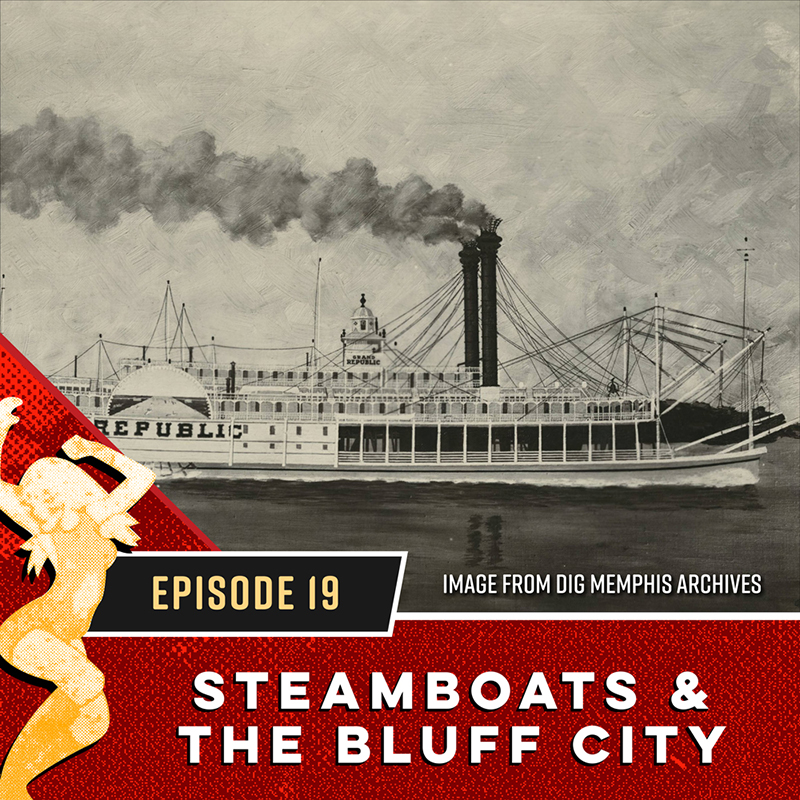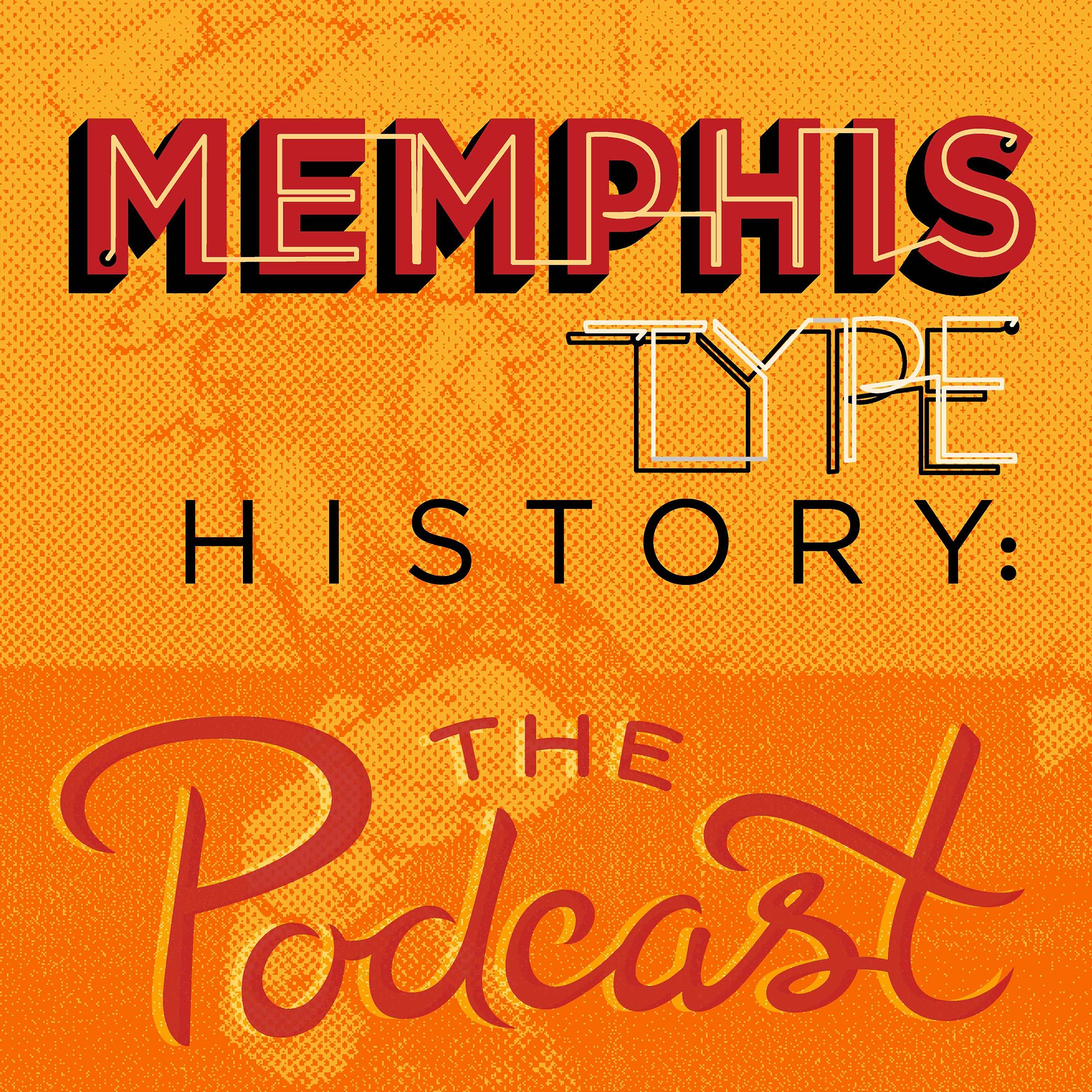Episodes

Sunday Oct 08, 2017
Steamboats and the Bluff City
Sunday Oct 08, 2017
Sunday Oct 08, 2017
In this episode of Memphis Type History: The Podcast, Caitlin and Rebecca get on a boat. No, that's wishful thinking. Instead, Caitlin tells Rebecca about the history of steamboats and how these ships played a role in the growth of Memphis.
This episode begins with an introduction to Caitlin's favorite steamboat captain, singer and songwriter John Hartford. Sure, he won three Grammy's for "Gentle on My Mind" but her preferred track is "Don't Leave Your Records in the Sun." Who doesn't love a good tip set to music?
Steamboats played a huge role in the economic growth of cities along the river, as well as the entire United States, in the early 19th century. These massive ships were able to take large amounts of freight and passengers both up and down the country's major rivers and tributaries due to the newfangled steam power technology.
The very first steamboat on the Mississippi River was The Orleans way back in 1811. It was launched from Pittsburgh and worked alright, but many design and technological improvements were quickly on their way. The boats that followed were named the Comet, the Vesuvius, the Enterprise, and the Washington. But only The Enterprise boldy went where no man had gone before.
By 1810, there were twenty steamboats on the river. At first they were made of wood and fueled by wood, but later that fuel became coal. At first, it took three weeks to make the trip up the Mississippi River to Ohio. But as time progressed and more powerful engines were constructed, better boiler systems came into play, pilots got more experienced, and dangers were removed from the river, this trip was cut down to just four days. Because of construction methods, fires, and frequent damage by obstacles along the river, a steamboat lasted, on average, about five years. By the 1830s, over 1,200 boats were chugging up and down the waterways.
Memphis became a prominent port out of its slave trade. This was one catalyst for the First Battle of Memphis on June 6, 1862, a naval battle that many citizens went out to watch. The Union won the battle, and Confederate naval control of the river was pretty much nonexistent after that. Tom Lee Park is located on the riverfront, and is named for an African American riverworker, who himself couldn't swim, rescued, on his own, 32 drowning people from sinking of the M.E. Norman in 1925.
So what was life like on a steamboat back in the day? Well, supposedly, beer was the #1 drink in the 1800s, also known as the glory days of the riverboat. There was a lot of gambling on the boats, and pilots often raced each other. There are several very famous races with well-known captains documented from history. These pilots were highly skilled, as they didn't have instruments and navigational readouts to go on. Instead, they learned from experience where the sandbars, rocks, snags, and landmarks were along the river. They also had to know about stuff that changed all the time, like river depth and current, and much of that was understood through understanding swirls, ripples, and what the color of water meant... and then pairing that knowledge with a gut instinct for the feel of the boat.
In the early 20th century, steamboat usage began to decline. Passengers began using a faster form of transportation – the train. Then came the Great Depression, which saw a decline in almost every industry. Shipbuilding technology had improved to where diesel engines were being used a lot more. Diesel tugs required smaller crews, which meant less wages. Plus, the technology was just better. So by the 1940s, steamboats were considered outdated.
These days, only a few riverboats still run on steam. According to research, the Belle of Louisville, the Natchez, the Minne-Ha-Ha, the Chautauqua Belle, the Julia Belle Swain, and the American Queen are still operating. In 2008, the U.S. government put an end to overnight passage on steamboats except with the permission of Congress.
In Memphis, you can still get out on the water on a riverboat. The journey begins on the cobblestone landing, built by immigrants from 1850 to 1890. It's presence made a big difference in Memphis becoming such a huge port city because it could withstand the mules loading and unloading all the heavy goods. As of 1996, it's estimated that more than 800,000 of the original cobblestones are still there, although it's all in great disrepair. It's the last complete stone landing on any waterfront in the country.
In the 1950s, most riverboat-related activities moved to President's Island. In 1955, the Memphis Queen Line was founded by Captain Ed Langford. In 1960, his part-time captain, Tom Meanley, purchased the company. He later endeavored to build the Memphis Queen III from 1977-1979, and then the Island Queen from 1982 to 1984, from the ground up. They made the hulls at Meanley Shipyard behind Captain Tom's house in Whitehaven, and then a house-moving company took them to McKellar Lake about 12 miles away. From there, they were towed to the cobblestone landing where the smokestacks, pilot house, and decks were added. You can ride the Island Queen, the Memphis Queen III, or the Memphis Showboat on sightseeing trips, dinner cruises, and private charters.
For full show notes, go to memphistypehistory.com/steamboats


Comments (0)
To leave or reply to comments, please download free Podbean or
No Comments
To leave or reply to comments,
please download free Podbean App.